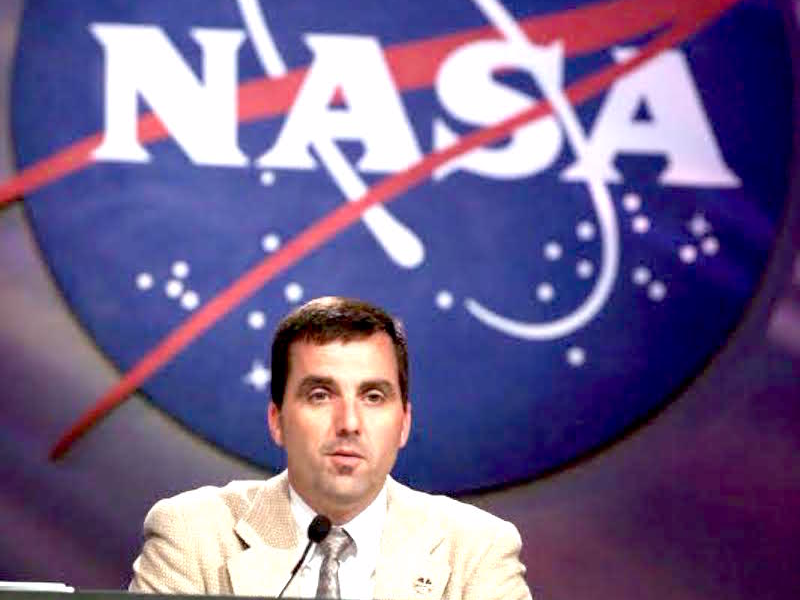• Former NASA flight director Paul Hill had a high-stakes job managing various space shuttle and International Space Station missions for the program.
• Hill shared the strategies he used to keep calm when things went wrong in mission control.
• He told Business Insider such tactics included focusing on the data, tamping down impulses, and retaining a level of “fear.”
Looking back now on an incident that took place in 2001 while he directed a flight from NASA’s mission control room, Paul Hill often thinks, “Holy cow, we could’ve killed everybody.”
But in that moment, during the space shuttle Discovery’s March 2001 expedition to the International Space Station (ISS), Hill just focused on the facts at hand.
The shuttle was docked at the ISS when a flight controller flagged the fact that one of its two cooling loops had essentially stopped working – possibly due to ice forming inside the system.
If the ice broke off, it could ultimately damage the cooling system and burn out Discovery’s computers.
The crews and mission control would then have about half an hour to either risk loss of life and initiate an emergency de-orbit, or remain stranded on the space station with a dead shuttle.
"That wasn't good news," Hill told Business Insider.
Hill, the author of "Leadership from the Mission Control Room to the Boardroom: A Guide to Unleashing Team Performance," worked on 24 different space shuttle and ISS missions as a flight director and led the investigation into the 2003 Columbia disaster.
He told Business Insider that NASA's flight controllers employ certain strategies and thought processes to combat stress during crises. Those tactics came in handy during the 2001 incident.

'We would've lost that shuttle'
Mission control woke up both the space station crew and the shuttle crew, who started working to solve the problem with the cooling loop. The engineering support team failed to identify the issue. Hill and his team watched the data, as mission control became quieter.
"Everybody tends to become more focused and more calm as they're working through the data, talking to each other, talking to the flight director on the voice loops, and making decisions," he said.
The crew corrected the issue by running both cooling loops hotter than they were supposed to be run.
Ultimately, the Discovery completed its mission and landed safely. A review of the cooling systems confirmed there'd been excess moisture in the loops.
"Had we not treated it the way we did, we would've lost that shuttle," Hill said. "There's a really good chance we could have lost those astronauts if that'd happened after we had un-docked or we had tried something foolish like jumping off the space station and trying to run for the ground."
After it was all over, the space station program manager came in and commended the mission control team.
"It was the first time I actually sort of disconnected from what we were doing and thought, 'Oh yeah, these guys are doing a great job. They are really good,'" Hill said. "Up until then it was all about doing the right thing and not taking our eyes off the ball."
Mission control has a strategy for staving off panic
This intense focus is partly how the flight controllers are able deal with potentially catastrophic situations. Instead of "running down the halls with our hair on fire," Hill said the team would focus on a series of questions.
• What was everything they knew - and did not know - about the situation at hand?
• What did the data actually say about the situation at hand?
• What was the worst thing that could happen as a result of the situation?
• Did the team have enough information to know for sure - and how could they get more information?
• What immediate steps could be taken to continue making progress in the mission or keep everyone safe?
He said it's important not to let past strategies or outcomes bias your understanding about a new crisis - whether you're flying people into space or launching your own business.
"Where you get in trouble is some bad thing starts happening and you feel the urge to start taking action," he said. "You say, 'Hey, I've been in this situation before. This is what we did the last three times. It's always worked so I'm going to do it again.'"

'Oh my God, did we just do that?'
Hill said that's why he always tried to instill a bit of "fear" in his team members, lest they allow their past successes go to their heads.
"What we do today, the decision we make today, matters," he said. "We have to look at this data and make the right decision and take the right action or make the right recommendation to protect these astronauts, these people who are friends of ours."
By focusing on scientific analysis and honing in on specific questions, Hill said NASA's mission control is able to establish a calm, logic-driven environment, even in the midst of a potential crisis.
"As an old boss of mind said, 'That first indication that you have a crisis is probably not when you want to go and jump out the window,'" Hill said. "Get a little bit more information, we can always panic later."
Hill did just that, once the danger had passed during the crisis with the Discovery's cooling loops.
"Really ugly emergencies in mission control, once you get trained and you're accustomed to the environment, aren't that difficult to deal with," he said. "But when I walked out after I was finished with my shift, I remember looking up at the sky, and thinking, 'Oh my God, did we just do that?'"

